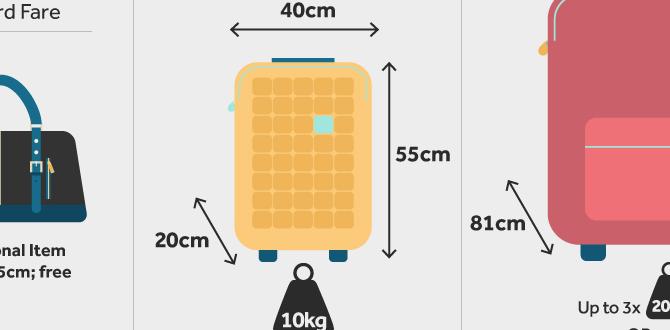Bhutan Airport to City Transport: Your Stress-Free Journey to Paro Starts Here.
Getting from Paro International Airport (PBH) to your accommodation in Bhutan is simpler than you might think! This guide breaks down your essential transport options, making your arrival smooth and enjoyable. We’ll cover everything from meet-and-greets to independent travel so you can relax the moment you land.
Bhutan, the Land of the Thunder Dragon, is a destination that captivates with its stunning natural beauty and rich cultural heritage. For many travelers, the journey begins at Paro International Airport (PBH), the country’s only international gateway. While Bhutan’s infrastructure is developing, understanding your transport options from the airport to your final destination, most commonly the capital city of Thimphu or the charming town of Paro itself, is key to a seamless experience. This guide is designed to demystify airport transfers, ensuring your adventure starts on a high note, free from travel anxieties. We’ll walk you through the most common and reliable ways to get around.
Your Bhutanese Arrival: Understanding Paro Airport (PBH)
Paro International Airport, nestled in a deep valley, offers one of the most dramatic flight approaches in the world. Despite its unique location, it’s a modern and efficient airport. Upon arrival, you’ll find that Bhutan’s tourism policy heavily influences your transport. For most tourists, pre-arranged transfers are the standard and often the most convenient way to connect with their journey.
The Big Picture: Bhutan’s Tourism Policy and Transport
Before diving into specific transport methods, it’s crucial to understand Bhutan’s “High Value, Low Impact” tourism policy. This policy means that most tourists travel with a pre-booked tour package. This package typically includes accommodation, meals, a licensed guide, and, importantly, transportation. Therefore, for the majority of visitors, your airport pickup will be handled by your tour operator.
This structured approach ensures a high-quality experience and helps control the environmental and cultural impact of tourism. It also means that arranging transport from the airport is generally straightforward, as it’s a core component of your organized trip. If you are traveling under this arrangement, your tour operator will have a representative waiting for you at the airport.
Option 1: The Pre-Arranged Tour Operator Transfer (Most Common)
As mentioned, the most prevalent and easiest method for tourists to travel from Paro Airport to their hotel is via their pre-booked tour operator. This is standard practice for all visitors entering Bhutan on a tourist visa.
What to Expect at Paro Airport
Upon clearing immigration and customs, you’ll enter the arrivals hall. Look for a sign bearing your name or the name of your tour company. Your Bhutanese guide or a representative from your tour company will be waiting to greet you with a warm smile and a traditional Bhutan visa information details regarding fees and arrangements.
They will assist you with your luggage and escort you to your designated vehicle. This is usually a comfortable private car or van, often accompanied by your guide who will be with you throughout your stay in Bhutan. This immediate connection ensures you’re in safe hands from the moment you step out of the airport.
Pros of Tour Operator Transfers:
- Convenience: Everything is pre-arranged, removing any stress about transportation upon arrival.
- Greeting and Assistance: You’ll be met by a familiar face, making your arrival feel personalized and secure.
- Comfort: Vehicles are typically well-maintained and comfortable for the journey.
- Insight: Your guide can begin sharing insights about Bhutan even during the drive to your hotel.
- Safety: You are traveling with licensed professionals who know the local roads and customs.
Cons of Tour Operator Transfers:
- Less Flexibility: You are tied to the schedule and route planned by your tour operator.
- Cost: While included in your package, it is a component of the overall tour cost which is a daily tariff.
Option 2: Independent Travel (Specific Circumstances)
While the vast majority of tourists come through organized tours, there are a few exceptions where independent arrangements might be considered, though they are less common and require specific permissions or visa types. This might include:
- Citizens of India traveling for tourism often have different arrangements and may have more options for independent transport.
- Diplomats, UN delegates, or those on official business may have different protocols.
- Travelers holding specific types of visas (e.g., business visas) might have flexibility, but this is rare for standard tourism.
Navigating Independent Transport
If you fall into one of these categories or have made specific arrangements outside the standard tourist package, you’ll need to be more proactive. Options might include:
Pre-booked Taxis from Paro
While not as common as tour operator-arranged transport, it is sometimes possible to pre-book a taxi directly from Paro. This would typically be arranged through your hotel in anticipation of your arrival if you are not on a tour package. Taxis in Bhutan are generally reliable, but ensuring you book in advance is crucial.
Hiring Ride-Sharing Services/Apps
Currently, ride-sharing apps like Uber or Grab are not prevalent or operational in Bhutan. Therefore, you cannot rely on these services for airport transfers.
Renting a Car with a Driver
For those seeking more independence on routes not covered by their tour, or for those traveling independently (again, in specific circumstances), renting a car with a driver is an option. This is usually arranged via a local Bhutanese travel agent or your hotel. This provides flexibility but comes at a cost and requires careful planning.
Pros of Independent Transport (When Applicable):
- More Freedom: Greater control over your schedule and sightseeing stops.
- Potentially Different Routes: Ability to explore areas not typically on standard tour itineraries.
Cons of Independent Transport (When Applicable):
- More Planning Required: You are responsible for all arrangements.
- Navigating Costs: Independent hires can be costly and need careful budgeting.
- Language Barriers: While most drivers and guides speak English, communication can sometimes be a challenge if not pre-arranged perfectly.
- Limited Availability: Finding independent drivers or specialized vehicles without pre-booking can be difficult.
Destination Focus: Paro Town vs. Thimphu City
Your transport needs will depend on where you’re heading. The two most common initial destinations from Paro Airport are Paro town itself and the capital city, Thimphu.
Journey to Paro Town
Paro is a beautiful valley town located very close to the airport. The flight into Paro actually lands in the Paro Valley. If your accommodation is in Paro town or nearby, the drive from the airport is very short.
Distance from PBH to Paro Town: Approximately 5-8 kilometers (3-5 miles).
Travel Time: Around 15-20 minutes, depending on traffic and specific location.
This short distance makes it an easy first leg of your journey. You’ll likely be driven directly to your hotel where you can settle in before exploring the town’s famous attractions like the Rinpung Dzong fortress or the National Museum.
Journey to Thimphu City
Thimphu, the capital of Bhutan, lies in a different valley and requires a longer drive. Many travelers choose to head to Thimphu first to experience the capital’s cultural sites, markets, and administrative center.
Distance from PBH to Thimphu: Approximately 50-60 kilometers (30-37 miles).
Travel Time: Around 1.5 to 2 hours, due to the winding mountain roads and the ferry point where the roads meet valleys.
The drive to Thimphu is scenic, taking you through lush valleys, along riversides, and over mountain passes. Your guide will likely point out key landmarks and share information about the landscape and local life along the way. This journey offers your first real taste of Bhutan’s stunning scenery.
Essential Information for Your Transfer
To make your journey from Paro Airport as smooth as possible, here are a few key points to keep in mind.
Altitude Awareness
Paro Airport is situated at an altitude of about 2,200 meters (7,218 feet) above sea level. Thimphu is higher, around 2,320 meters (7,612 feet). While not excessively high, it’s advisable to take it easy on your first day to acclimatize.
Symptoms of altitude sickness can include headaches, fatigue, and nausea. Staying hydrated, avoiding alcohol on your first day, and generally moving at a slower pace can significantly help. For most travelers, the gradual ascent and short transfer times mean this is rarely a major issue, but it’s good to be aware.
Currency Exchange and SIM Cards
You’ll find currency exchange facilities and ATMs at Paro Airport, though exchange rates might be slightly better in Thimphu. If you need a local SIM card for communication, these are typically available at the airport as well, often through your tour operator.
Having a local SIM can be useful for contacting your hotel or guide if needed, though your tour package usually covers all necessary arrangements. The Bhutanese Ngultrum (BTN) is pegged to the Indian Rupee (INR), and INR is widely accepted, especially in denominations of 100 and below.
What to Pack for Your Transfer
While your main luggage will be handled, consider having a small daypack or carry-on with essentials for your transfer:
- Water bottle
- Snacks (though water and snacks might be provided)
- Camera to capture the first stunning views!
- A light jacket or sweater, as temperatures can fluctuate
- Any personal medications, including those for motion sickness if prone
- Portable phone charger
Driving in Bhutan: Roads and Safety
Bhutan’s roads, especially those connecting valleys, are often winding and mountainous. While driving standards are generally good, roads can be narrow and may have occasional delays due to roadworks or weather.
Road Conditions from PBH
The road from Paro Airport to Paro town is usually well-maintained. The road from Paro to Thimphu is also largely paved but involves significant changes in elevation and sharp turns as it navigates the terrain. Official tourism statistics from the Bhutan Tourism Council emphasize the importance of skilled drivers for navigating these roads safely.
Driving Etiquette
Bhutanese drivers tend to be cautious and courteous. Horns are used more as a signal of presence rather than aggression. Speed limits are generally observed, especially on scenic routes. Your driver and guide will be well-versed in these practices.
Comfort and Logistics for Families and Special Needs
As Michael C. Herrera from Journey Essentials, I always think about comfort and ease for everyone. For families traveling with young children, or adults requiring special assistance or supplies like absorbent products, seamless transport is even more critical.
Traveling with Children
If you’re traveling with children, your tour operator can usually arrange child seats or booster seats if requested in advance. Ensure you communicate these needs clearly when booking your tour. The shorter journey to Paro town is ideal for young travelers. For longer trips to Thimphu, encourage them to look out the window; it’s a visual feast!
Considering Absorbent Products
For adults or children who may need to use adult or child diapers for comfort or incontinence during travel, planning ahead is key. While Bhutanese culture is discreet and understanding, relying solely on finding specialized products upon arrival might be challenging. It’s best to pack an ample supply from home to ensure comfort and peace of mind throughout your journey, including airport transfers and longer drives. Carrying these discreetly in your luggage, along with any necessary cleaning wipes or disposal bags, can make a significant difference in your travel experience.
Ensuring comfort for all travelers, regardless of age or specific needs, is part of a well-planned journey. This includes having access to necessary personal care items so that the focus remains on enjoying the incredible experience Bhutan offers.
Cost Considerations
For most tourists, the cost of airport transfer is bundled into the overall daily package rate set by the Bhutanese government for inbound tourism. This daily package typically covers accommodation, meals, guide services, internal transport, and entry fees to monuments. As such, there isn’t a separate, direct “airport transfer fee” to pay on top of your tour cost.
If, in rare cases, you are arranging transport independently, expect costs to be comparable to hiring a private vehicle for a day, factoring in fuel and driver’s wages. This can range from $70-$150 USD or more per day, depending on the vehicle type and duration, according to typical travel agency quotes.
Table: Comparison of Transport Durations
To help visualize the travel times, here’s a quick comparison:
| Destination | Approximate Distance | Estimated Travel Time | Typical Transport Method |
|---|---|---|---|
| Paro Town | 5-8 km (3-5 miles) | 15-20 minutes | Pre-arranged Tour Vehicle / Taxi |
| Thimphu City | 50-60 km (30-37 miles) | 1.5 – 2 hours | Pre-arranged Tour Vehicle |
FAQ: Bhutan Airport to City Transport
Q1: Do I need to book airport transport in advance for Bhutan?
A: Yes, for most international tourists, airport transport is arranged as part of your pre-booked Bhutanese tour package. Your tour operator will coordinate your pick-up from Paro International Airport (PBH).
Q2: Who will pick me up at Paro Airport?
A: Typically, a representative from your Bhutanese tour operator, usually your local guide, will meet you in the arrivals hall. They will be holding a sign with your name or the tour company’s name.
Q3: What are the main destinations from Paro Airport?
A: The most common destinations are Paro town (very close to the airport) and Thimphu, the capital city. Some may also travel directly to Punakha, though this is a longer journey.
Q4: How long does it take to get from Paro Airport to Thimphu?
A: The drive from Paro Airport to Thimphu usually takes about 1.5 to 2 hours, covering approximately 50-60 kilometers (30-37 miles) of mountainous terrain.
Q5: Can I get a taxi easily at Paro Airport?
A: While taxis are available in Bhutan, they are not typically hailed at the airport like in many other countries for international tourists. Pre-arranged transport through your tour operator is the standard. If you are an Indian national or have specific independent visa arrangements, you might find taxis, but booking in advance through your hotel is still recommended.
Q6: Are ride-sharing apps like Uber available in Bhutan?
A: No, ride-sharing apps are not currently operational in Bhutan. You will need to rely on pre-arranged transport, local taxis booked in advance, or private vehicle hires.
Q7: What is the altitude of Paro Airport and Thimphu?
A: Paro Airport is at an altitude of approximately 2,200 meters (7,218 feet), and Thimphu is around 2,320 meters (7,612 feet). It’s advisable to take it easy and stay hydrated upon arrival to acclimatize.
Conclusion
Navigating Bhutan airport to city transport is a straightforward process, largely designed to ensure your comfort and safety from the moment you land. For the vast majority of travelers, your pre-booked tour operator will handle all your airport transfers, providing a seamless and welcoming introduction to the Kingdom of Bhutan. Whether you’re heading to the charming valley of Paro or the bustling capital of Thimphu, your driver and guide are prepared to ensure a pleasant journey.
Remember to communicate any special needs, such as child seats or specific dietary requirements, well in advance with your tour operator. Pack your essentials, stay hydrated, and get ready to immerse yourself in the magic of Bhutan. With this guide, you’re well-equipped to make your arrival and initial travel within Bhutan as stress-free and enjoyable as possible, setting the stage for an unforgettable adventure in this unique Himalayan nation. The journey from the airport is just the beginning of your incredible Bhutanese experience!







